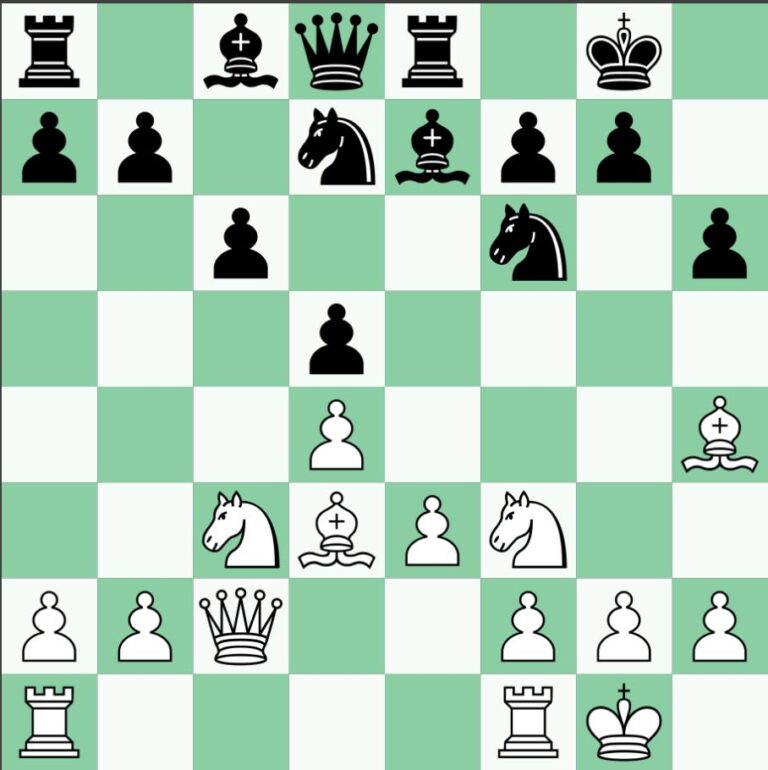Section 1: Understanding Chess Openings
Chess openings are the initial moves of the game that set the stage for the rest of the match. They are crucial in establishing control of the center of the board, developing your pieces, and creating a solid defense. A good opening can give you an advantage from the beginning, while a weak opening can put you at a disadvantage and make it difficult to recover.
There are countless variations of chess openings, each with its own set of strategies and tactics. However, there are four main principles that are essential in understanding and mastering chess openings:
- Control the center: The center squares of the board – d4, d5, e4, e5 – are the most important squares on the board. They allow your pieces to move freely and control a larger portion of the board. It´s crucial to occupy and control these squares in the opening to gain an advantage.
- Rapid development: It´s important to bring your pieces into the game quickly and efficiently. This allows you to put pressure on your opponent and discourage them from making strong moves. Develop your knights and bishops first, then your rooks and queen, and finally your king.
- Don´t move the same piece twice: In the opening, you want to move as many different pieces as possible to develop your army. Moving a piece twice in the opening can waste valuable time and put you at a disadvantage.
- Protect your king: Your king is your most valuable piece, and it´s important to keep it safe. Make sure it is protected by other pieces or has a safe place to go in case of an attack.
Section 2: Types of Chess Openings
As mentioned earlier, there are countless variations of chess openings, but they can be categorized into a few main types:
- Openings that open with 1.e4: This is the most common type of opening and is known as the “King´s Pawn Opening.” White moves the pawn in front of the king two spaces, allowing the bishop and queen to develop. From here, the opening can branch out into many different variations.
- Openings that open with 1.d4: This type of opening is known as the “Queen´s Pawn Opening.” White moves the pawn in front of the queen two spaces, allowing the queen´s bishop to develop. This opening can also lead to various variations depending on the opponent´s response.
- Openings that open with 1.c4: This is known as the “English Opening” and begins with the pawn in front of the queen moving one space. This opening focuses on controlling the center and developing the pieces before pushing the pawn to d3 or d4.
- Openings that open with 1.Nf3: This is known as the “Reti Opening” and begins with a knight move instead of a pawn. This opening is more strategic and aims to control the center and develop pieces before committing to a specific pawn structure.
Each of these openings has its own set of strengths and weaknesses and can lead to different types of game play. It´s important to study and understand the different variations to be prepared for any situation in a chess game.
Section 3: Key Strategies in Chess Openings
While there are countless strategies and tactics that can be used in different chess openings, there are a few key ones that can be applied to almost any game:
- Develop your pieces: As mentioned earlier, developing your pieces quickly and efficiently is crucial in the opening. Try to get as many pieces out onto the board as soon as possible.
- Control the center: As the center of the board is so important, make sure to occupy and control it with your pawns and pieces. This can give you a strategic advantage and limit your opponent´s options.
- Castle your king: Castling is an important defensive move that can protect your king and also bring your rook closer to the center of the board. Make sure to castle as early as possible, but also be aware of any potential weaknesses in your castle.
- Be aware of your opponent´s plans: As you make your own moves, pay attention to what your opponent is doing as well. Try to anticipate their moves and counter their plans.
- Connect your rooks: In the opening, try to connect your rooks by moving your queen´s and king´s knight. This can create more attacking options and make your position stronger.
Section 4: Common Mistakes in Chess Openings
Even with a good understanding of chess openings and key strategies, it´s easy to make mistakes in the opening phase of the game. Here are some common mistakes to avoid:
- Moving the same piece multiple times: As mentioned earlier, moving the same piece twice in the opening is a waste of time and can put you at a disadvantage. Try to avoid this whenever possible.
- Not controlling the center: The center of the board is crucial in chess, and failing to control it can put you on the defensive and limit your options.
- Making unnecessary pawn moves: Pawn moves should be purposeful in the opening, either to control the center or support the development of a piece. Moving pawns randomly without a clear reason can weaken your position.
- Ignoring your opponent´s moves: Paying attention to your opponent´s moves is crucial in chess, and ignoring them in the opening can lead to missed opportunities or even losing the game.
- Rushing and not thinking carefully: It´s important to take your time and think carefully in the opening. Rushing and making impulsive moves can lead to mistakes and put you at a disadvantage.
Section 5: Conclusion
In conclusion, understanding chess openings and having a repertoire of different strategies is essential in becoming a strong chess player. By controlling the center, developing your pieces efficiently, and being aware of your opponent´s moves, you can gain an advantage in the opening and set yourself up for success in the rest of the game. Avoiding common mistakes and having a solid understanding of the different types of openings and their variations can also greatly improve your game. With practice and study, you can become a master of chess openings and elevate your overall performance on the chessboard.






